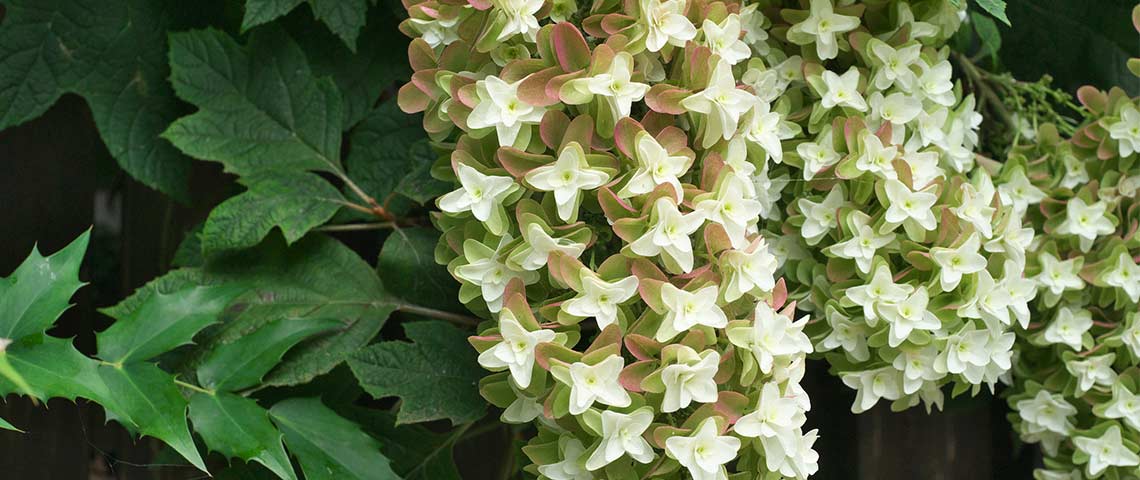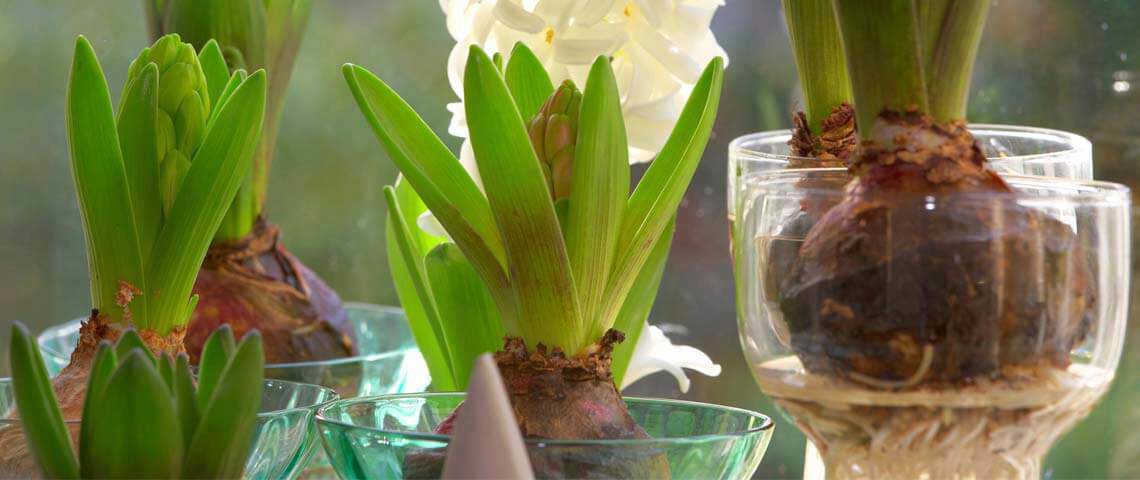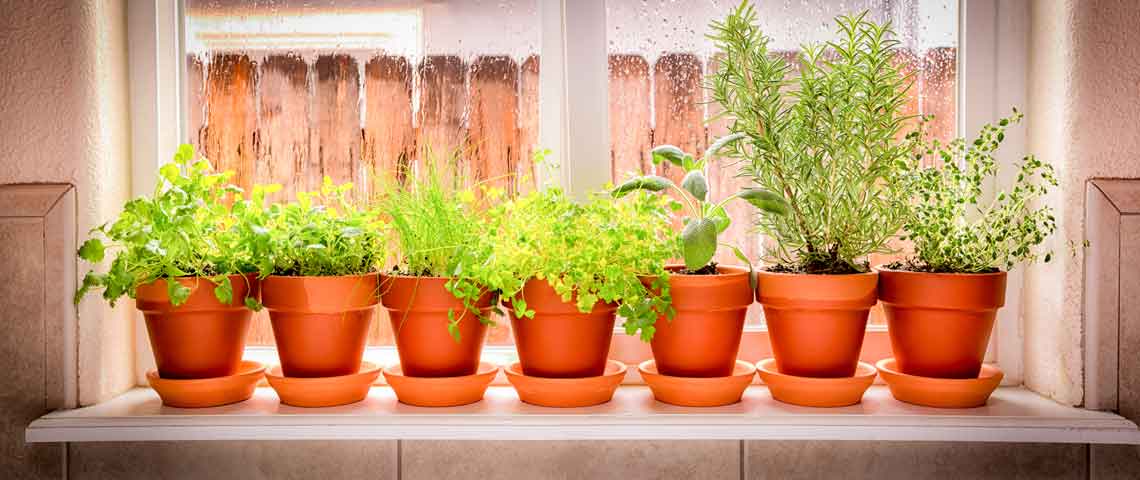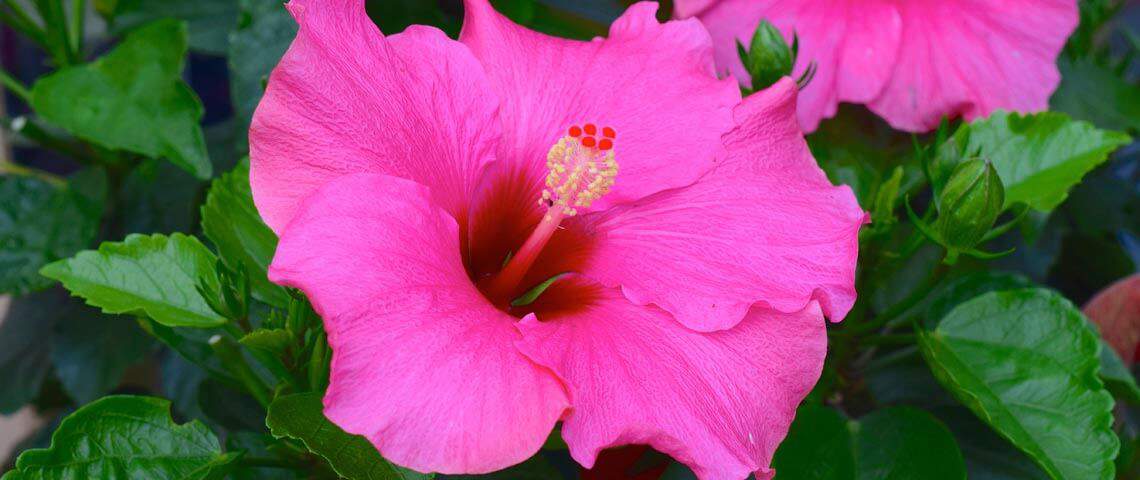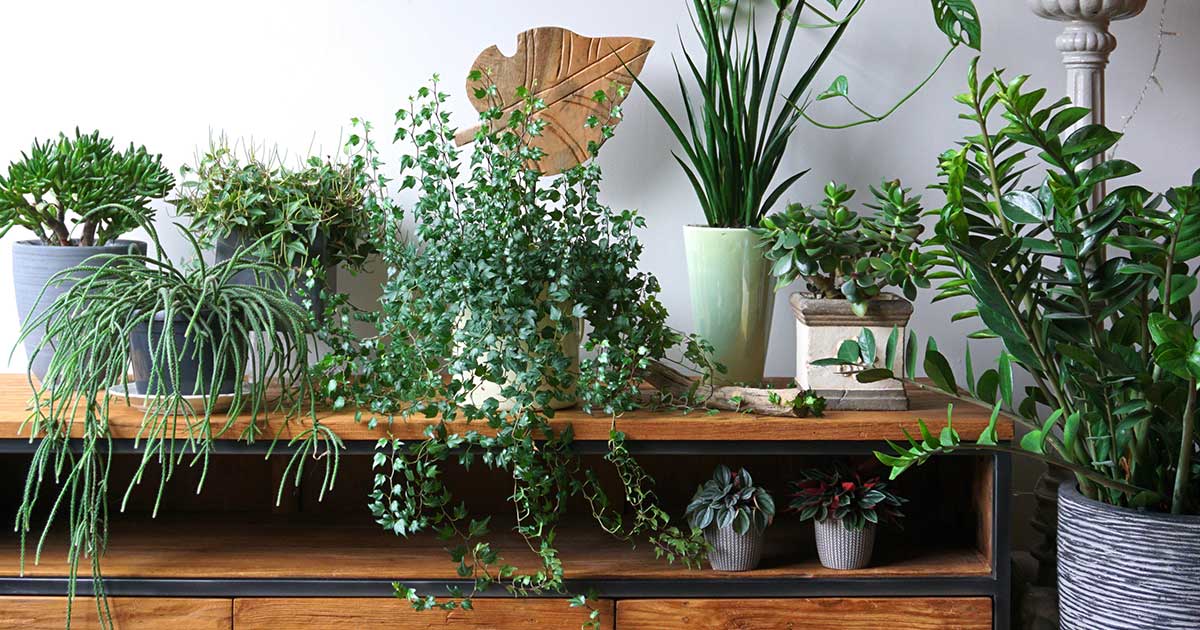Why and How to Grow Oakleaf Hydrangeas
Hydrangeas are one of America's favorite plants, but oakleaf hydrangea offers attributes that common garden hydrangeas don't. Native to the American Southeast, this outstanding shrub delivers all the benefits of native plants, plus year-round beauty to refresh and inspire. In small spaces or large landscapes, these simple basics can help you make this low-maintenance native your own:
- Oakleaf Hydrangea and Four-Season Interest
- Oakleaf Varieties for Every Garden Size
- Basic Oakleaf Hydrangea Care
- Pruning Oakleaf Hydrangeas
- Protecting Oakleaf Hydrangeas From Insects
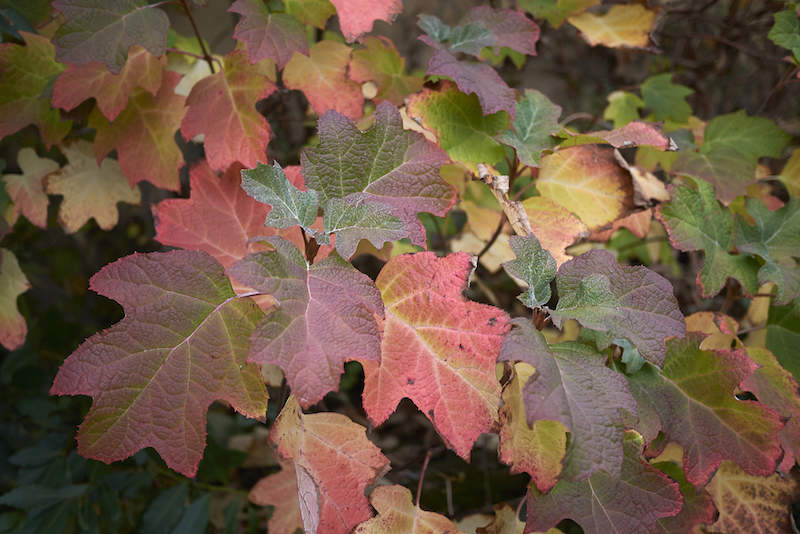
Oakleaf's fall foliage is an autumn highlight.
Oakleaf Hydrangea and Four-Season Interest
Oakleaf hydrangea's year-long parade starts in spring when dark green leaves unfurl. Depending on the variety, the oak-like leaves can grow up to 12 inches wide. Flower buds form long, cone-shaped clusters that crown summer landscapes with color. The elegant clusters combine large, showy florets with small, budlike flowers. Unlike mophead hydrangeas, soil pH doesn't affect the color of oakleaf blooms.
As fall arrives, oakleaf hydrangea leaves put on a display of color that rivals blazing maples. Brilliant shades of crimson, purple, orange, gold, and bronze appear. In some climates, the show persists into winter. As leaves drop, this native beauty reveals exfoliating, cinnamon-brown bark. The peeling strands stand out against snow.

Snowflake oakleaf hydrangea has prolific double flowers.
Oakleaf Varieties for Every Garden Size
As oakleaf hydrangea's popularity grows, so do the varieties available to you. From compact, dwarf types to large landscape specimens, varieties like the following ensure there's one for you:
- Ruby Slippers – At just 3 to 4 feet tall and 4 to 5 feet wide, this dwarf oakleaf has extra-large summer blooms that quickly deepen from white to pink to ruby red. Fall foliage is vibrant mahogany.
- Pee Wee – As its name suggests, this hydrangea stays compact: near 4 feet tall and 3 feet wide. Late spring's white blooms shift to summer pink, then age to antique tan. Fall leaves turn orange, red, and purple.
- Snowflake – This midsize oakleaf grows 4 to 6 feet tall and wide, with oversize summer clusters of double flowers. Fall foliage is purple and crimson.
- Snow Queen – This mid-size shrub grows 4 to 5 feet tall, but spreads up to 6 feet wide. Midsummer blooms shift from white to rosy pink. Fall leaves turn deep red-bronze. Snow Queen's cinnamon bark is especially striking.
- Alice – One of the largest oakleaf hydrangeas, Alice grows up to 15 feet tall and wide. The profuse, creamy white summer flowers turn pink, then mature to blushed bronze. Brilliant purple-red fall foliage follows.
All these varieties, like the native species, flourish in U.S. Department of Agriculture plant hardiness zones 5 through 9.1

Snow Queen offers elegant clusters of single blooms.
Basic Oakleaf Hydrangea Care
Oakleaf hydrangeas are easy-care plants that ask for little beyond these basic needs:
- Site and sunlight – In northern areas, oakleaf hydrangeas do well in full sun to light shade. In southern zones, give them sites with morning sun and protection from intense afternoon rays.
- Soil – Oakleaf flourishes in rich, well-drained, slightly acidic soil. In areas with heavy clay, take time to amend your soil at planting time. Lilly Miller Garden Gypsum helps improve water penetration and drainage, loosens compacted soil, and encourages good root growth. Pennington Plant Starter helps transplants thrive as well.
- Water – Oakleaf hydrangeas naturally do best when soil stays evenly moist, but never soggy. Water thoroughly, then check the soil by hand before watering again. To prevent root rot, avoid overwatering. If the soil is wet, wait a few days and check again.
- Fertilizer – A complete fertilizer such as Pennington Rejuvenate Plant Food All-Purpose 4-4-4 at planting time starts your hydrangeas off with essential nutrients they need, plus a blend of natural and organic ingredients to improve soil and help plants thrive. Feed your oakleaf in early spring each year with the same fertilizer or a flower-enhancing fertilizer such as Pennington Rejuvenate Plant Food Rose & Flower 4-6-3. Then feed it again four months later, in midsummer.

Dried oakleaf flowers stay beautiful on the plant or in arrangements.
Pruning Oakleaf Hydrangeas
Some hydrangeas, such as Limelight green hydrangea, bloom on new wood grown each year. But oakleaf hydrangeas flower on old wood carried over from the year before.
The buds that become striking oakleaf flowers form on stems in the summer before you enjoy those blooms. Always prune oakleaf hydrangeas immediately after they finish flowering, before next year's buds can form. Wait too long and you may prune away all the flower buds you're hoping for.
Whether you garden in small spaces or have room to roam, an oakleaf hydrangea can add beauty to your home and landscape every month of the year. Pennington is here to help with timely advice and premium lawn and garden products so you can take your landscape and garden to new heights year-round.
Protecting Oakleaf Hydrangeas From Insects
Oakleaf hydrangeas are prone to insects, such as spider mites. Visible signs of spider mite damage can be webs on stems or tiny holes on leaves. Sevin Sulfur Dust starts killing immediately upon contact, and will not harm oakleaf hydrangeas. People and pets may enter the area once dust has settled. Apply a light dusting frequently to keep your hydrangeas healthy and free from insect and disease damage.
Always read product labels thoroughly and follow instructions.
Pennington with design is a registered trademark of Pennington Seed, Inc.
Fast Acting is a trademark of Encap, LLC.
GardenTech is a registered trademark of Gulfstream Home and Garden, Inc.
Sevin is a registered trademark of Tessenderlo Kerley, Inc.
Sources:
1. U.S. Department of Agriculture, “USDA Plant Hardiness Zone Map."
Photo Credit:

